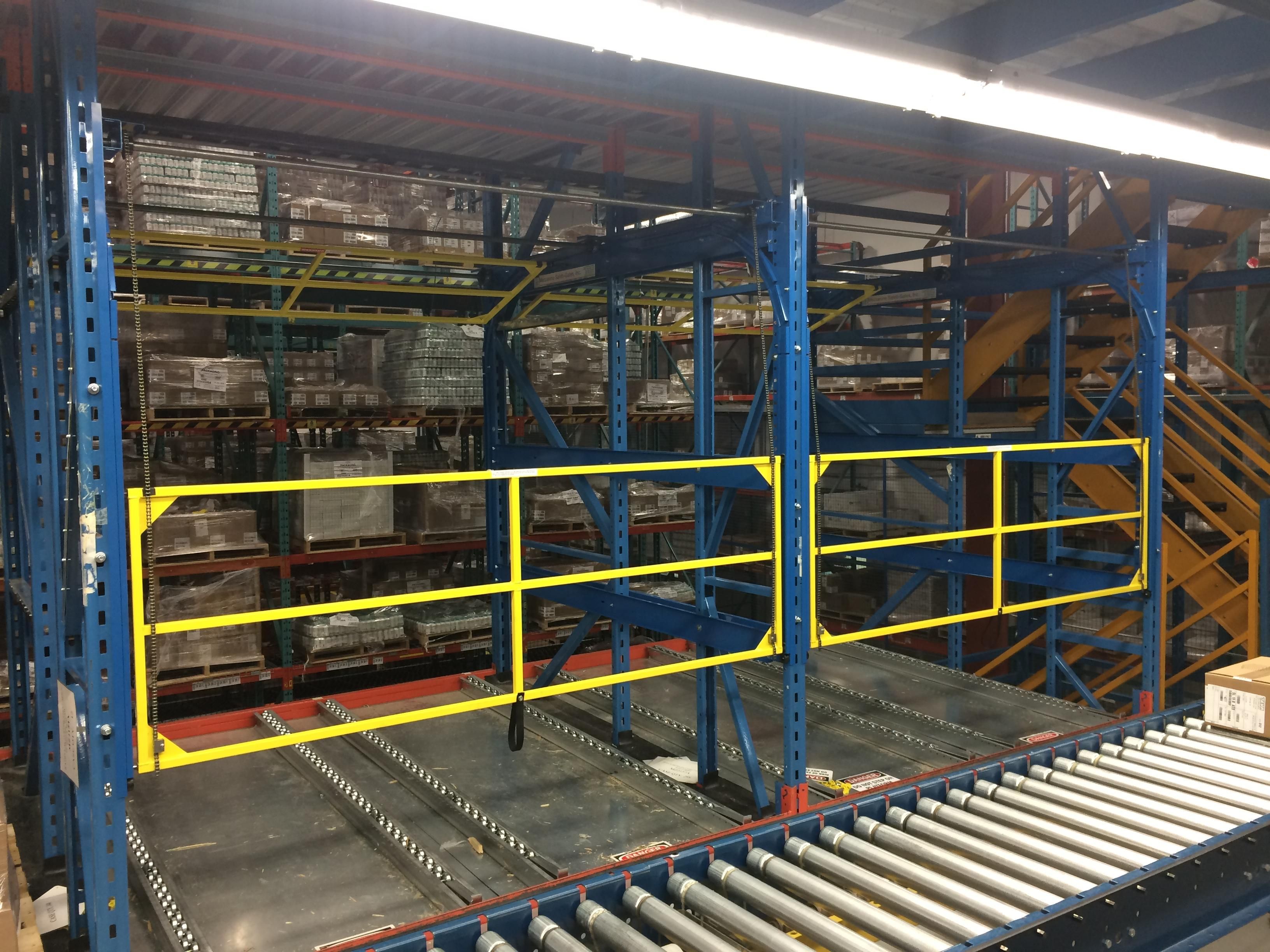
OSHA Safe + Sound Week - 4 Areas to Review for Fall Protection
This week, August 12-18, 2019, is OSHA’s Safe + Sound Week, which is a week to recognize the importance of workplace health and safety programs. It’s a great week to take time to evaluate your employee safety programs and equipment and to make sure your employees know how to use the equipment properly.
Fall protection is an important piece of workplace safety - during your evaluation, take a look around and up to see if there are unprotected fall hazards in your material handling facility. There are four areas where falls often take place, and if you don’t have safety equipment in place, your employees could be at risk.
- Elevated Pallet Drop Ledges
OSHA and ANSI fall protection standards mandate that a barrier be in place at all times during the operation, even while pallets are being loaded, staged or worked on. This includes areas within pick modules. The best method for meeting this safety requirement is a dual-gate system that is configured so when one gate is open the opposite gate is closed. Dual-gate systems come in many different designs; some are designed for specific applications, so make sure to determine which design will work best for your environment. - Pallet Flow Lanes
In pallet flow applications, without safety gates, employees are at risk from falling from the upper levels as well as pallet loads being pushed into the legs of employees when they are working in the lane. If designed correctly, a dual-gate safety system can create a safe environment; this design uses a gate at the ledge and a second gate at the end of the lane where the picker is standing. The gates are interconnected and counterbalanced so when one gate is open, the opposite gate is closed. Operationally, the ledge is open when the lift truck loads pallets into the lanes, which means the rear-side gate is closed, preventing employees from accessing the lane and keeping them a safe distance from the ledge. Pickers then can manually raise the rear gate, which closes the ledge gate, securing the ledge while they pick from the pallets, as well as preventing the lift truck from loading more pallets while they are in that area. - Loading Docks
The operation at a loading dock traditionally consists of a tractor trailer backing up to an elevated section of the building so material can be loaded/unloaded from the trailer. When the trailer is in place the elevated area remains safe, but once the trailer drives away there is an exposed ledge at the end of the elevated loading dock, which can expose employees to a risk for falls. Because this ledge is elevated it needs to be secured. The best solution is a single-gate system that the employee on the loading dock is able to raise and lock open only when the tractor trailer is in place, and automatically closes once the truck drives away from the area. This allows the operator to control when they want to open the gate, but makes sure the ledges remains secure when there is no truck in position. - Dock-Lifts
Dock-lifts also provide risks for falls when employees ride them with material. Safety gates for lifts should feature automatically closing gates, which ensures fall protection for any worker on the lift. As the lift elevates, the gates should automatically close and lock into place. The gates stay closed and locked until the lift goes back to ground level, providing fall protection while the lift is raised and material is moved from the lift, truck and dock.
Those are just four main areas in which you may have fall hazards - there may be more, and it will depend on the type and size of your facility. Take time out of your week to review your safety equipment and procedures to ensure your employees are safe when working on elevated levels. If you have questions about the best safety gate designs for your needs, we’re always happy to help.